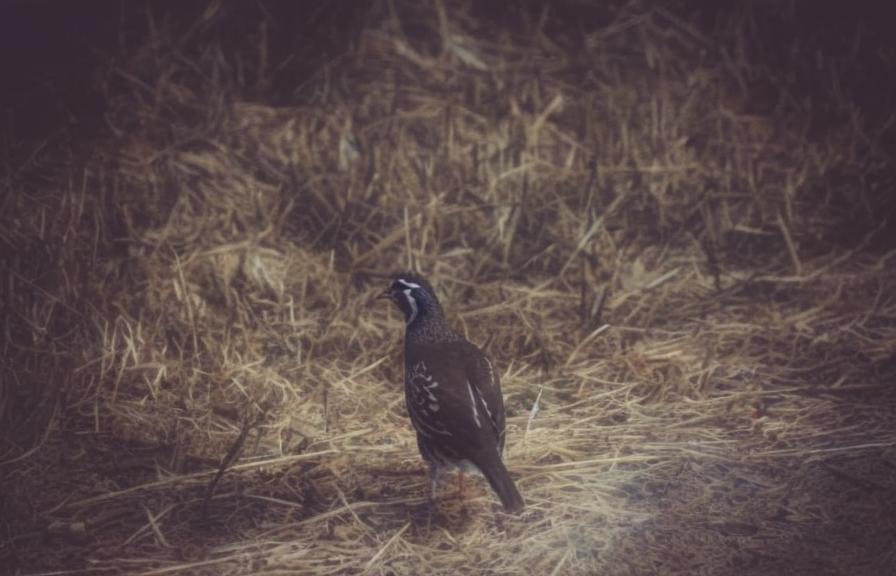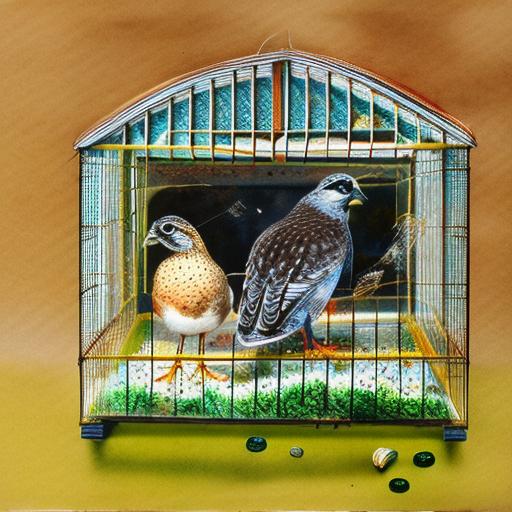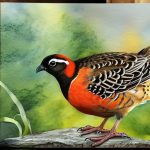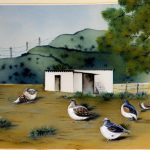Quail breeder cages are essential for maintaining a healthy and productive quail breeding operation. A proper breeder cage provides a safe and comfortable environment for quail to lay eggs, incubate them, and raise their young. Without a suitable breeder cage, quail may become stressed, leading to decreased egg production and poor hatch rates. Additionally, a well-designed breeder cage can help prevent injuries and aggression among quail, ensuring the overall well-being of the birds.
Furthermore, a proper quail breeder cage is crucial for maintaining the genetic integrity of the quail flock. Breeding quail in a controlled environment allows breeders to select for desirable traits and avoid inbreeding, ultimately improving the overall quality of the quail stock. By providing a dedicated space for breeding activities, breeder cages also help to minimize disturbances and disruptions, creating a more conducive environment for successful breeding and rearing of quail chicks.
Key Takeaways
- A proper quail breeder cage is essential for successful quail breeding and maintaining a healthy flock.
- The size and design of the quail breeder cage should be carefully chosen to accommodate the specific needs of quail and promote breeding behavior.
- Understanding the needs of quail in captivity, including space, nesting areas, and social dynamics, is crucial for successful breeding.
- Setting up and maintaining a quail breeder cage requires attention to cleanliness, proper nesting materials, and regular monitoring of the flock.
- Proper lighting and temperature control are important factors in promoting breeding behavior and maintaining the health of quail in breeder cages.
- Health and safety considerations for quail in breeder cages include disease prevention, predator protection, and providing a stress-free environment.
- Common mistakes to avoid when using a quail breeder cage include overcrowding, inadequate nesting space, and poor temperature regulation.
Choosing the Right Size and Design for Your Quail Breeder Cage
When selecting a quail breeder cage, it is important to consider the size and design that will best meet the needs of the quail. The size of the cage will depend on the number of quail being housed and the breeding goals of the operation. A larger cage allows for more space and can help reduce stress and aggression among the birds. However, it is important to balance this with the need for efficient use of space and resources.
The design of the breeder cage should also take into account the specific behaviors and requirements of quail. For example, quail are ground-dwelling birds that prefer to nest in secluded areas, so the cage should provide suitable nesting boxes or areas for the birds to lay their eggs. Additionally, the cage should be constructed of materials that are durable, easy to clean, and resistant to corrosion. Proper ventilation and access to natural light are also important considerations in the design of a quail breeder cage.
Understanding the Needs of Quail in Captivity
Quail have specific needs that must be met in order to thrive in captivity. When housing quail in breeder cages, it is important to provide them with a suitable environment that mimics their natural habitat as closely as possible. This includes providing appropriate bedding material, such as straw or wood shavings, to create a comfortable and clean living space for the birds. Quail also require access to fresh water at all times, as well as a balanced diet that meets their nutritional needs.
In addition to physical needs, quail also have social and behavioral requirements that should be considered when housing them in breeder cages. Quail are social birds that prefer to live in groups, so it is important to provide enough space for them to move around and interact with each other. Providing hiding spots and nesting areas can help reduce stress and aggression among the birds. Understanding the natural behaviors of quail is essential for creating an environment that promotes successful breeding and overall well-being.
Tips for Setting Up and Maintaining a Quail Breeder Cage
Setting up and maintaining a quail breeder cage requires careful attention to detail and regular maintenance. When setting up a new breeder cage, it is important to thoroughly clean and disinfect the cage to prevent the spread of disease and parasites. Providing suitable nesting material and ensuring proper ventilation are also essential steps in preparing the cage for breeding activities.
Regular maintenance of the breeder cage is crucial for ensuring the health and productivity of the quail. This includes cleaning and replacing bedding material as needed, providing fresh water daily, and monitoring the condition of the cage for signs of wear or damage. Additionally, regular inspections of the birds for signs of illness or injury can help prevent potential health issues from spreading throughout the flock.
The Role of Lighting and Temperature Control in Quail Breeding
Lighting and temperature control play a critical role in the breeding success of quail. Proper lighting is essential for stimulating egg production in quail, as they are sensitive to changes in day length. Providing a consistent lighting schedule that mimics natural daylight patterns can help encourage regular egg laying in breeding quail. Additionally, maintaining appropriate temperatures within the breeder cage is important for ensuring the health and well-being of the birds.
During the breeding season, it is important to provide supplemental heat to maintain optimal temperatures within the breeder cage. This can be achieved using heat lamps or heating pads, depending on the size and design of the cage. Monitoring temperature levels regularly and making adjustments as needed can help prevent stress and ensure successful incubation of eggs. Proper lighting and temperature control are essential factors in creating an environment that promotes successful breeding and healthy chick development.
Health and Safety Considerations for Quail in Breeder Cages

Maintaining the health and safety of quail in breeder cages requires proactive measures to prevent disease, injury, and stress. Providing a clean and sanitary living environment is essential for preventing the spread of disease among quail. Regular cleaning and disinfection of the breeder cage, as well as providing fresh bedding material, can help minimize the risk of illness and parasites.
In addition to physical health, it is important to consider the safety and well-being of quail in breeder cages. This includes providing adequate space for the birds to move around without overcrowding, as well as minimizing potential hazards such as sharp edges or protruding wires within the cage. Monitoring the behavior of the birds for signs of aggression or injury can help prevent potential conflicts and ensure a safe living environment for breeding quail.
Common Mistakes to Avoid When Using a Quail Breeder Cage
When using a quail breeder cage, there are several common mistakes that should be avoided in order to maintain the health and productivity of the birds. One common mistake is overcrowding the breeder cage, which can lead to stress, aggression, and decreased egg production among quail. It is important to provide enough space for each bird to move around comfortably and engage in natural behaviors.
Another common mistake is neglecting proper cleaning and maintenance of the breeder cage. Failing to regularly clean and disinfect the cage can lead to the spread of disease and parasites among quail, ultimately impacting their overall health and breeding success. Additionally, inadequate temperature control or lighting can also have negative effects on breeding quail, leading to decreased egg production and poor hatch rates.
In conclusion, proper care and attention to detail are essential for maintaining a successful quail breeding operation using breeder cages. By understanding the specific needs of quail in captivity, providing suitable housing and environmental conditions, and avoiding common mistakes, breeders can create an environment that promotes healthy breeding and overall well-being for their quail flock.
If you’re looking for tips on creating the perfect environment for your quail breeders, you might also be interested in an article on PoultryWizard about designing a functional and stylish chicken coop. Check out their article on the Hannah Montana Chicken Coop for inspiration on how to create a comfortable and efficient living space for your poultry.
FAQs
What is a quail breeder cage?
A quail breeder cage is a specially designed enclosure used for housing and breeding quail. It provides a controlled environment for quail to lay eggs and raise their young.
What are the features of a quail breeder cage?
Quail breeder cages typically have multiple compartments or sections to separate different groups of quail. They also have nesting boxes, feeders, and waterers to provide the necessary resources for breeding and raising quail.
Why are quail breeder cages used?
Quail breeder cages are used to facilitate the breeding and production of quail for various purposes, such as meat and egg production, as well as for hobbyists and enthusiasts who want to raise quail for their own enjoyment.
How do quail breeder cages benefit quail breeding?
Quail breeder cages provide a controlled and safe environment for quail to breed, lay eggs, and raise their young. This helps to increase the success rate of breeding and ensures the health and well-being of the quail and their offspring.
What are the different types of quail breeder cages?
There are various types of quail breeder cages available, including wire cages, wooden cages, and plastic cages. Each type has its own advantages and may be suitable for different breeding purposes and environments.
How should quail breeder cages be maintained?
Quail breeder cages should be regularly cleaned and sanitized to ensure a healthy and hygienic environment for the quail. They should also be inspected for any damage or wear and tear, and repairs or replacements should be made as needed.
Meet Walter, the feathered-friend fanatic of Florida! Nestled in the sunshine state, Walter struts through life with his feathered companions, clucking his way to happiness. With a coop that’s fancier than a five-star hotel, he’s the Don Juan of the chicken world. When he’s not teaching his hens to do the cha-cha, you’ll find him in a heated debate with his prized rooster, Sir Clucks-a-Lot. Walter’s poultry passion is no yolk; he’s the sunny-side-up guy you never knew you needed in your flock of friends!







